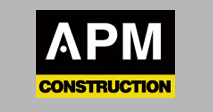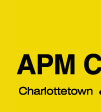



 |
Atlantic Business Magazine
March, 2006
Downtown Dilemma
Charlottetown
residents have certain notions about their tiny capital
city, not the least of which is that its narrow, friendly
streets, lacking in large developments, help attract
tourism. So last fall when local developer APM Group
announced it wanted to build its new $8-million headquarters
on the waterfront, a huge debate erupted over the currently
vacant land. People wrote in to the local paper criticising
the design of the proposed building, the local planning
board rejected APM’s attempt to have the land rezoned and
over at Peter Rukavina’s blog - a favoured virtual watering
hole of island residents - people posted 50 comments for and
against the structure.
APM’s president, Tim Banks - a familiar sight locally with
his trademark black-framed, square glasses - doesn’t have
too much to say about the whole fiasco. APM withdrew the
building application before it hit city council and Banks
says they won’t submit it again until the city gives them
some concessions. For her part, city councillor Kim Devine,
who is also head of the planning board, says that if council
had allowed the rezoning they wouldn’t have had any say over
the building’s design. “I think people in the city have very
strong feelings about the waterfront and what goes up
there.”
That might be an understatement. After the planning board
rejected APM’s application, Banks wrote a letter to
Charlottetown’s mayor calling for Devine’s removal from the
board because of her “obstructionist attitude.” The
Charlottetown Guardian, a daily paper, obtained a copy of
the letter and printed it, setting off the latest argument
over the future of the tidy city’s downtown.
To listen to Banks and Devine talk, the sense is that both
want the same thing. The developer and the councillor both
speak about cooperation and growth. But that’s where the
similarity ends. APM searches out economic opportunity,
regardless of whether it’s in the city core or the
outskirts. For every project the developer has proposed for
downtown - and not too darn many have passed approval - it
builds one outside, often big box developments which end up
contributing to the core’s current moribund retail
environment.
“We’re a developer and we seek out opportunity and we’ve
been banging our heads against the wall in downtown
Charlottetown for some time,’’ Banks says. He points to the
three years it took him to get a development permit for a
$10-million condo project that recently broke ground. Banks
says economic growth has marked Atlantic Canada’s last seven
years with Halifax, Moncton and Fredericton all sprouting
new buildings, but not Charlottetown. “There’s no
significant private investment being done in Charlottetown.”
Devine, an energetic, red-haired woman with a quick smile,
came to council two years ago after sitting as a citizen on
the city’s planning board. She ended up on the board after
organizing neighbourhood meetings about noise from the bars
coming from Peakes Quay. When Clifford Lee vacated his seat
to run for Mayor, Devine went for it. “One of
Charlottetown’s really special features is the human scale
of the city,’’ she says. “I think people feel really
comfortable when they’re walking around neighbourhoods and
cities have that really nice scale to them. That’s what
makes a really attractive city.”
When Devine talks about Charlottetown’s growth, she
envisions attractive residential neighbourhoods, a healthy
downtown core, a lively arts scene and a well-designed
historic core with strong tourist appeal. To make this
happen, Devine says the city needs to pay attention to
“quality of life” issues such as safe streets, nearby
schools and churches and must work toward economic
development while preserving the historic essence of the
core. Devine says she’s not against development, but adds:
“I think there are others who would characterize me as that.
I think what we have to look at is development that is
appropriate for the city.”
The bylaws aimed at preserving the historic character of the
city are the same ones Banks complains are hindering
development. Banks contends that the current density bylaws
can’t accommodate enough condo units to make developments
feasible. But even if they did, it’s not certain how
welcoming downtown residents are of larger-scale buildings.
After city council relented and gave him approval for an
additional number of units for the $10-million condo
building Banks is erecting downtown, residents went to the
Island Regulatory and Appeals Commission to try and stop
construction.
Now Banks is trying a different approach. He’s joined the
board of Downtown Charlottetown Inc., the local booster
agency for the core, and is selling off all his investments
in the city. “I’ll go back in there and I’ll give them what
advice I can,” he says. “They can listen or they can take
what they want, but at least I won’t be sitting at the table
with my own interests at stake.”
For her part, Devine says she’s as determined as ever to
attract residents to the city’s core. She cites a statistic
saying residents outspend office workers five to one
downtown. “I think one way we can revitalize the city is by
making sure it’s a place where they want to live, where they
want to raise their families, where they want to come and
walk to a coffee shop - do all those things that people do
in cities.”
|
|

3 Lower Malpeque Road
Charlottetown, PEI
C1A 1R4
Tel: 902.569.4000
Fax: 902.569.1149
info@apmconstruction.com



|







![]()
![]()

![]()



